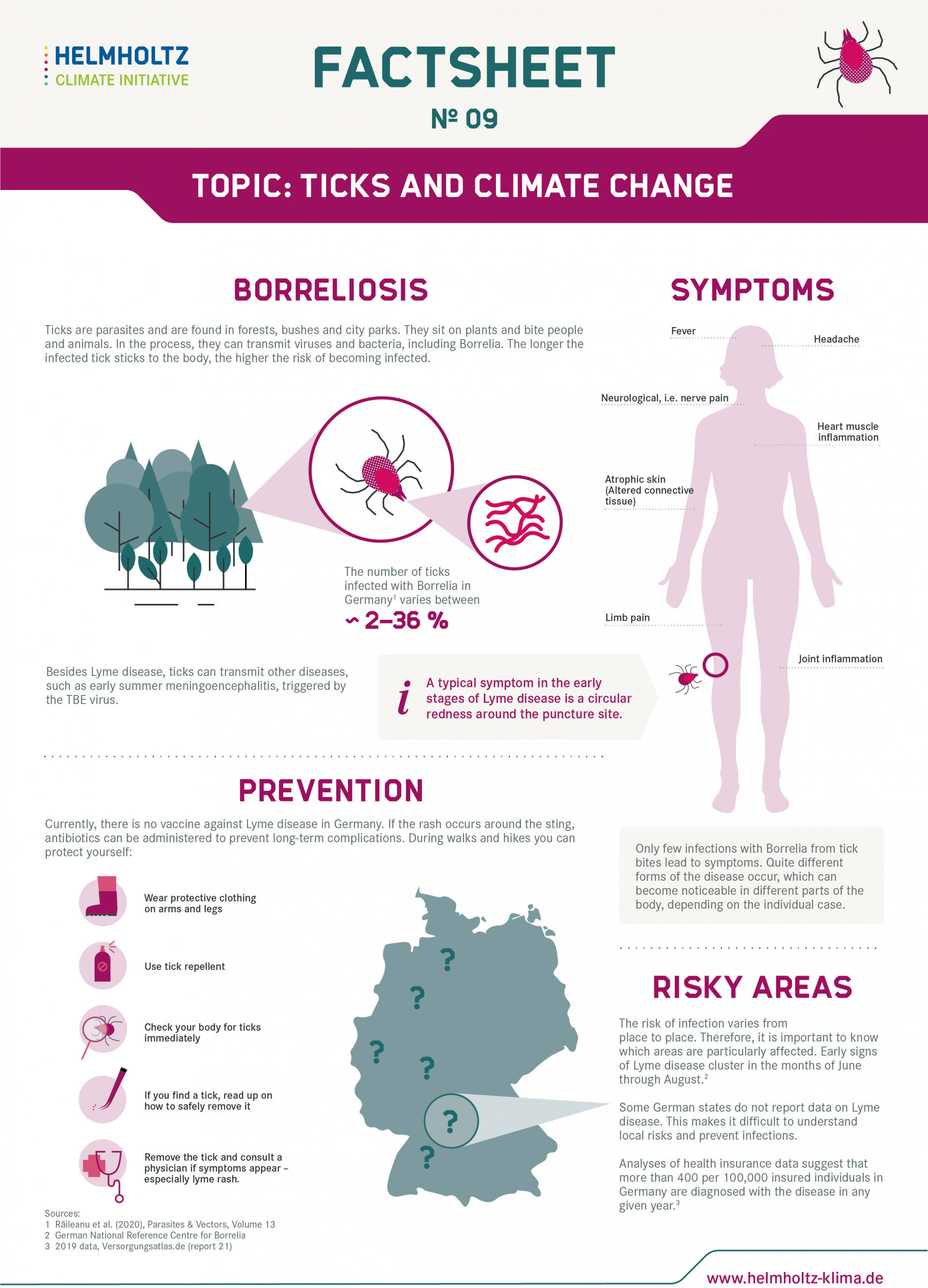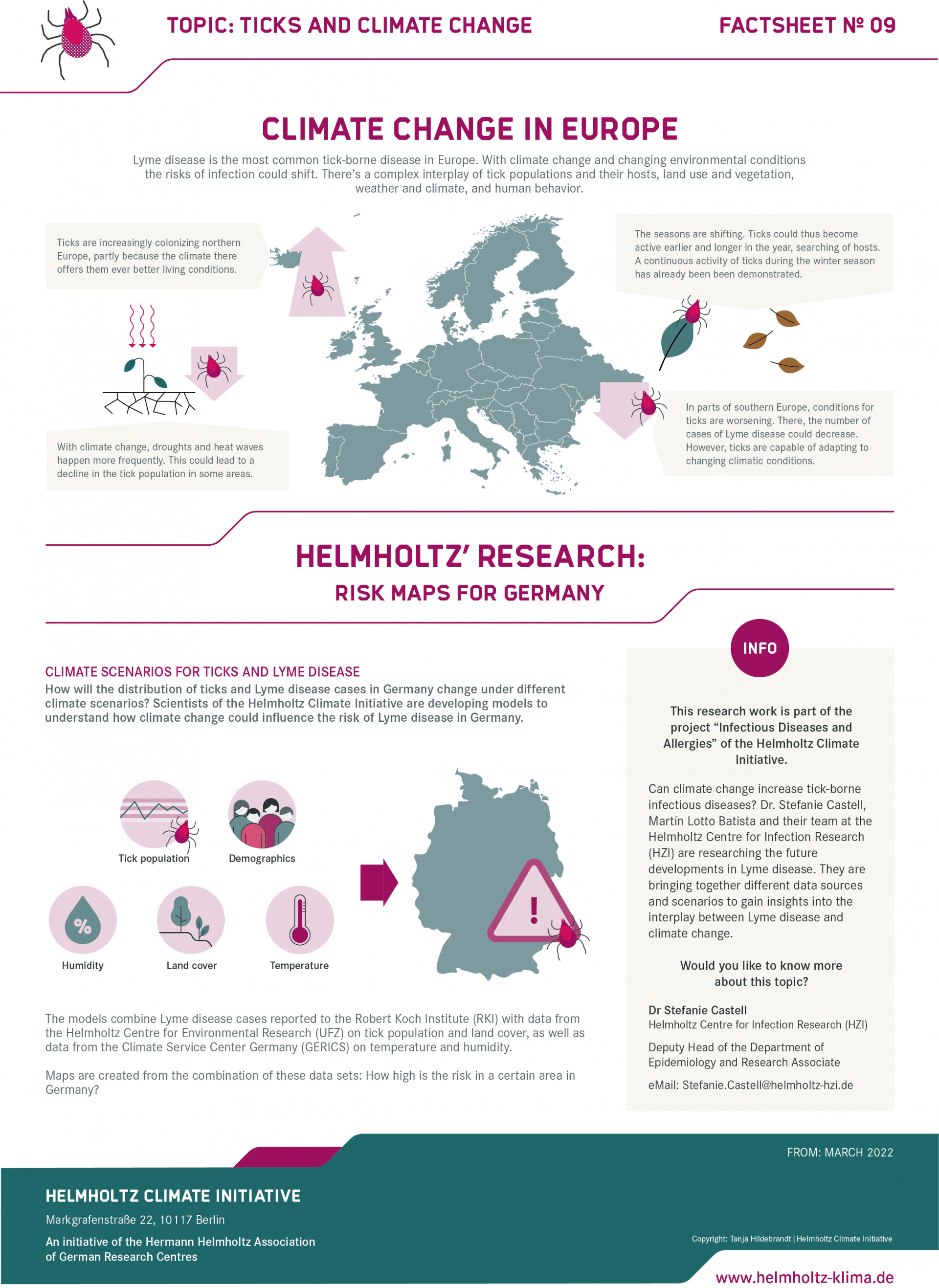Ticks and climate change: Is the risk of infections rising?


Take a stroll through the fields or forests now and you run the risk of bringing some unwanted companions back home with you. As a consequence of climate change, ticks are becoming active earlier and staying active longer throughout the year. When a tick is infected with a virus or with bacteria such as borrelia, the encounter has the potential to become a very uncomfortable one. The Helmholtz Climate Initiative fact sheet provides information about the symptoms, prevention, and climate-related impact on the infection risk of Lyme disease, the disease most frequently transmitted by ticks in Europe.
A bite surrounded by a circular red area, headaches, aching limbs, fever, or even inflammation of the heart muscle: All of these are potential symptoms of a Lyme disease infection. Fortunately, only a small number of borrelia infections caused by tick bites will lead to this type of illness. Nevertheless, evaluations of public health insurance data indicate annual Lyme disease diagnoses for 429 out of every 100,000 insured persons in Germany. Lyme disease is the disease most frequently transmitted by ticks in Europe.
Climate change is also changing the living environment for the bacteria that cause Lyme disease. It is most likely that climate change will enable ticks to spread more widely in some regions of Europe while making others less hospitable for them. Here the synergy between tick populations and their host animals, land use and vegetation, weather and climate as well as human behavior is a complex one. Because climate change causes shifts to the seasons, ticks may well become active earlier in the year and for longer periods.
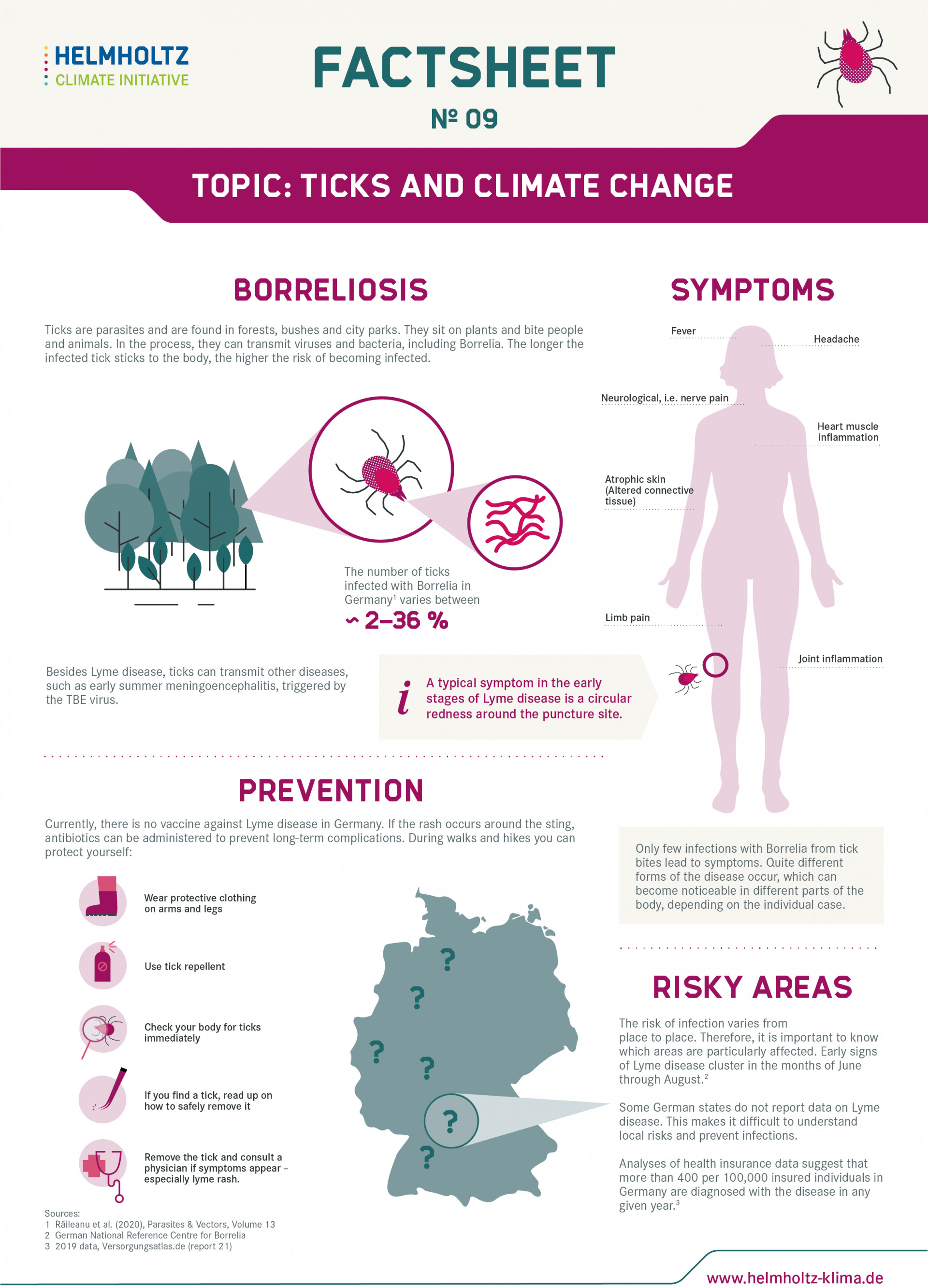
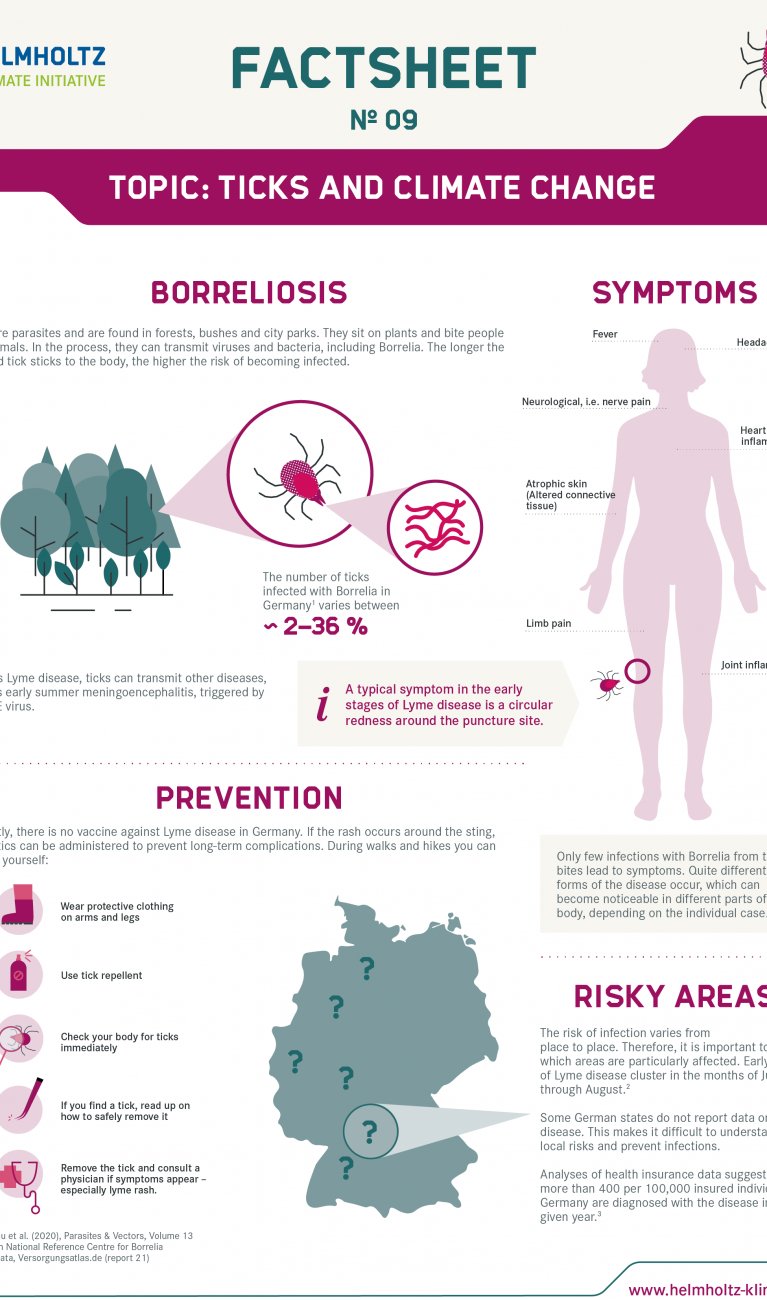
What regions of Germany are especially affected? This question is difficult to answer due to the fact that some German states do not report any data on Lyme disease.
Scientists at the Helmholtz Climate Initiative are currently working on models that promise to more effectively predict Lyme disease risks in specific regions of Germany in the future. This approach combines data from the Robert Koch Institute (RKI), the Helmholtz Centre for Environmental Research – UFZ, and the Climate Service Center Germany (GERICS) to prepare risk maps.
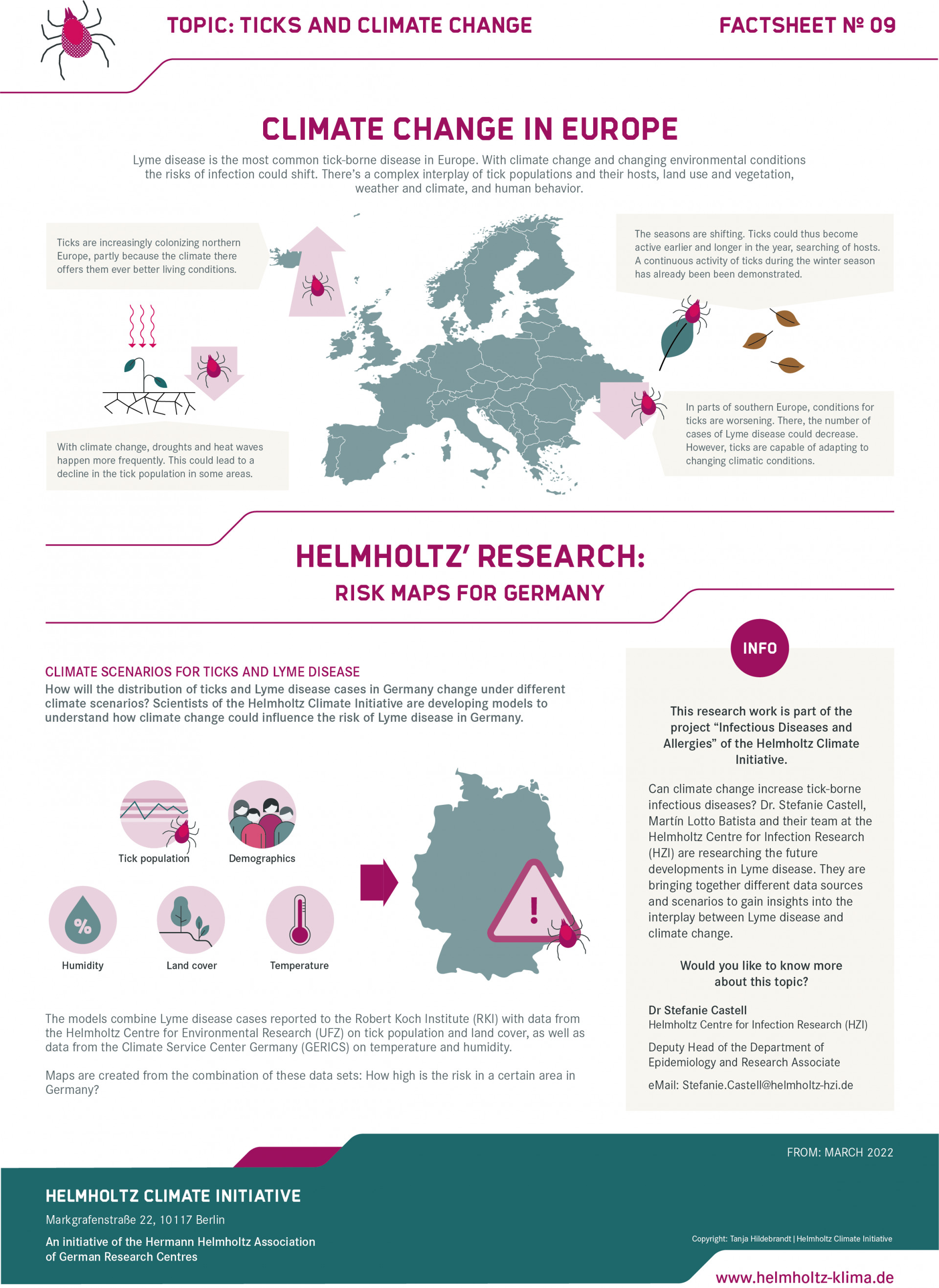
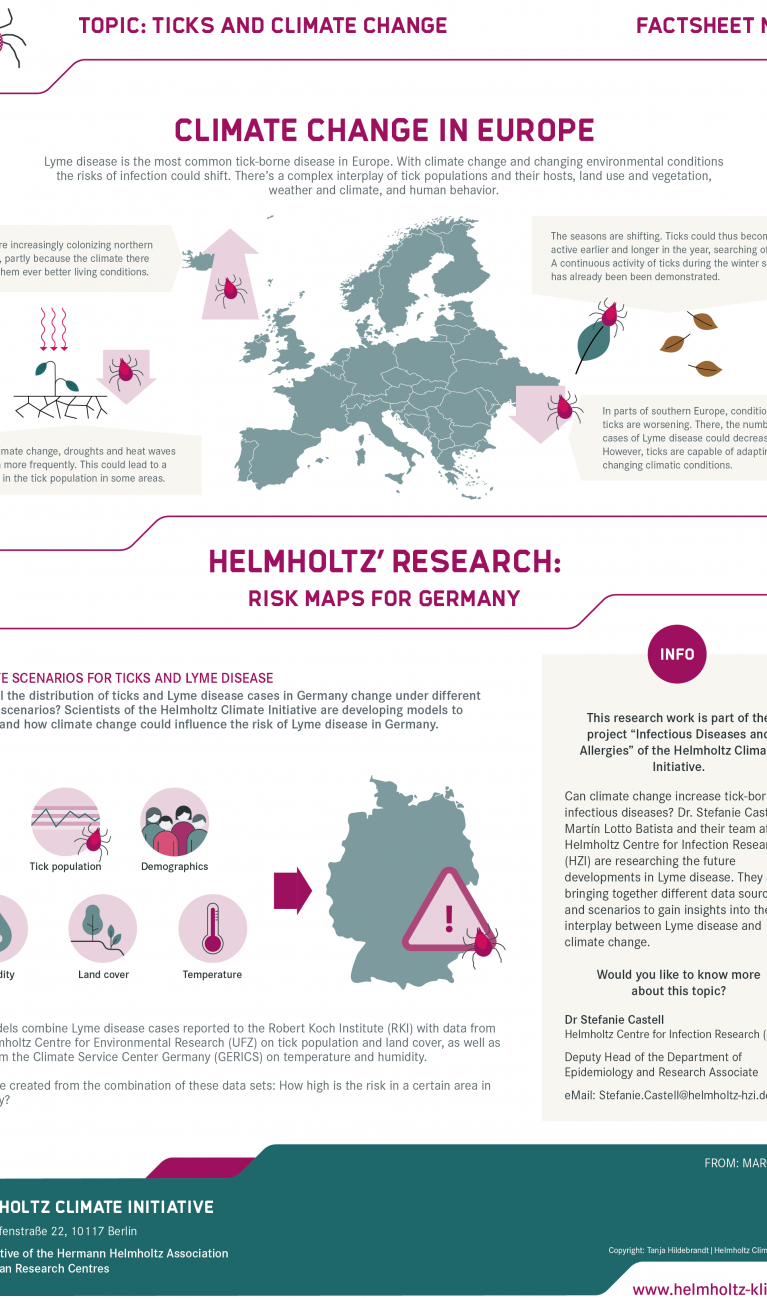
The central question for the researchers: Does climate change increase the risk of tick-borne infectious diseases? Dr. Stefanie Castell, Martín Lotto Batista, and their team at the Helmholtz Centre for Infection Research (HZI) are studying the future development of Lyme disease. This research is part of the “Infectious diseases and allergies” project of the Helmholtz Climate Initiative.
In addition to Lyme disease, ticks potentially transmit other diseases, such as tick-borne encephalitis caused by the TBE virus. Every spring, the Robert Koch Institute publishes a risk map on the topic.

